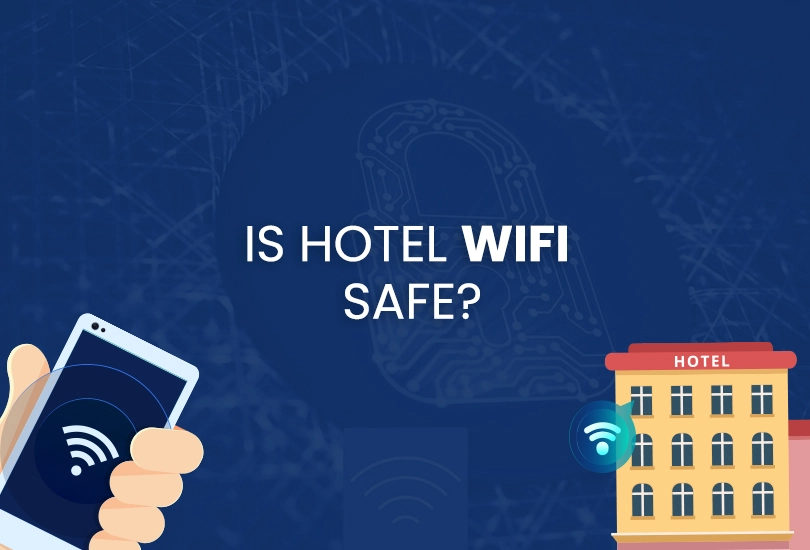Two-factor authentication (2FA) can often be the only thing standing between your account and a hacker trying to gain unauthorized access. In the simplest of terms, 2FA can be a life savior. It prevents cyberattacks, such as phishing, social engineering, password hacking, and more. Enabling it takes only a minute but goes a long way in ensuring that your digital account is protected against malicious logins.
Let’s take a look at how it works and how you can enable it.
Why 2FA Is Important?
Two-factor authentication ensures a double-layered security check when you log in to applications. It integrates a secondary authentication method to confirm your identity before giving access to your online information, such as your social media handles, email addresses, and more.
2FA is an effective tool to enhance your online security as it neutralizes the risk of password hacking and other security loopholes. This means that if your password is being hacked or phishing by someone, 2FA will prevent access until they have obtained your secondary authentication method.
What differentiates 2FA is its unique security posture that keeps the user active in their online security process. In addition, it makes them vigilant when it comes to maintaining and strengthening their digital safety.
In short, two-factor authentication makes it pretty impossible for attackers to access apps and websites without acquiring physical access to your secondary authentication method.
How to Set Up 2FA?
Almost every app offers 2FA, but you need to enable it by following a few simple steps.
Before moving further, go to your account’s security settings and check if the 2FA is available on your application or not. Regarding Google, they have integrated the Google Authenticator app designed to generate 2FA tokens.
2FA can be enabled on various other services, not just Gmail. If you are trying to avoid writing tutorials for every service, then say something like, “For a tutorial, we’ll show you how to enable 2FA on your Google account.” They say that you can also enable 2FA for your social media accounts, such as Facebook and Instagram.
For the tutorial, we’ll show you how to enable 2FA on your Google account.
How to Enable Two-Factor Authentication on Google
- Sign in to your Google Account.
- Right-click on your profile picture and then click on Manage Your Google Account from the pop-up window.
- From the options on the left side, click “Security.”
- Now click on 2-Step Verification.
- Click on “Get Started.”
- Now click on Confirm Password.
- Choose one of your preferred verification methods from
- Security Key
- Text Message
- Voice Call
- Confirm the prompt that you have received on your device.
- Now, complete verification using the method that you have chosen.
- Insert a backup phone number or email address (backup is important in case you lose access to your device).
- To verify your phone number, Google will send you a verification code. Now, enter the code into your Google Account 2FA settings to complete the process.
Types of Authentication Factors
You can use various authentication methods to authenticate your identity. Currently, the widely used authentication factors are:
- Knowledge Factor
- Possession Factor
- Biometric Factor
- Local Factor
Knowledge Factor
In the authentication factor, the user incorporates information that includes his password, personal identification number, or any secretly shared data between entities.
Possession Factor
As the name depicts, the possession factor involves something the user incorporates to approve authentication requests, such as their ID card, a security token, and mobile devices.
Biometric Factor
In biometric factor authentication, the user extends something from their physical self to approve the verification process. These personal attributes include physical characteristics such as fingerprint, facial, and voice authentication.
Location Factor
Location-based authentication involves authentication made from a specific location. Location factor authentication attempts are made to prevent your system from making fake login attempts from different locations.
Time Factor
Time factor authentication involves a specific time window that allows the user to make a login attempt. This means that the time factor will restrict access to that window if a logging attempt is made out of that given time frame.
Types of Two-Factor Authentication
Two-factor Authentication comes in many forms that incorporate SMS 2FA, TOTP 2FA, Push-Based 2FA, and WebAuthn. Each type entails advantages and some drawbacks that we have shared below.
SMS 2FA
This is the most common two-factor authentication type in which users receive a security code via text message on their mobile device. To verify their identity, the user must insert the security code into the app/website he wants to visit.
TOTP 2FA
TOTP, or time-based one-time password, is the most commonly used two-factor authentication that generates unique passwords while incorporating standard algorithms. These time-based passwords are available online and bring hassle-free ultimate second-factor Authentication.
Push 2FA
This type of authentication sends a push notification through the application to the user’s device, which alerts users on authentication attempts. It allows users to cross-check login attempts or even deny or approve them.
WebAuthn
Have you ever dreamed of password-free access? If yes, then WebAuthn has just made your dream come true. It works on highly reliable cryptographic registration principles that store your identity using a private key to its server. On the other hand, users can access their desired platform using biometrics.
Are Authenticators More Secure For Two-Factor Authentication?
Two-factor authentication is undoubtedly one of the best ways to secure your online access to apps and websites. First, however, you should use a few contemplations while picking a strategy to form a 2FA security setup.
Text Message (Less Secure)
Incorporating text messages to recover your login code is less secure than an authenticator application.
Text-based authentication is less reliable because it’s more straightforward for a hacker to get access to messages than it is to acquire your cell phone. They use multiple hacking techniques to divert text messages or hack into your cell phone and access them.
Although it is less secure, using text messages as 2FA is better than having no 2FA!
Authenticator Application (Highly Secure)
There is no doubt that authentication applications are more secure and reliable than text message authentication. It uses an authentication app and produces two-factor login codes that make them pretty safe and secure. Integrating the authenticator app makes it challenging for hackers to create codes within your device without letting you know. It could be possible only if they have access to your device.
Hence, to prevent your device from any potential threat, ensure that your authenticator app is protected using a secure and reliable password.
Wrap Up
We strongly recommend setting up two-factor authentication, especially if you have sensitive data to share. Although some online services don’t offer 2FA, we suggest that you improve your password security with strong passwords using our password generator.






